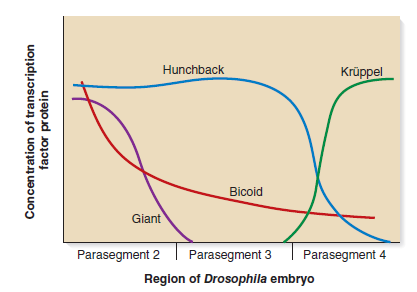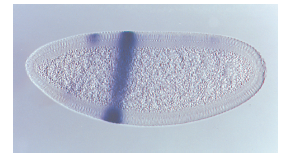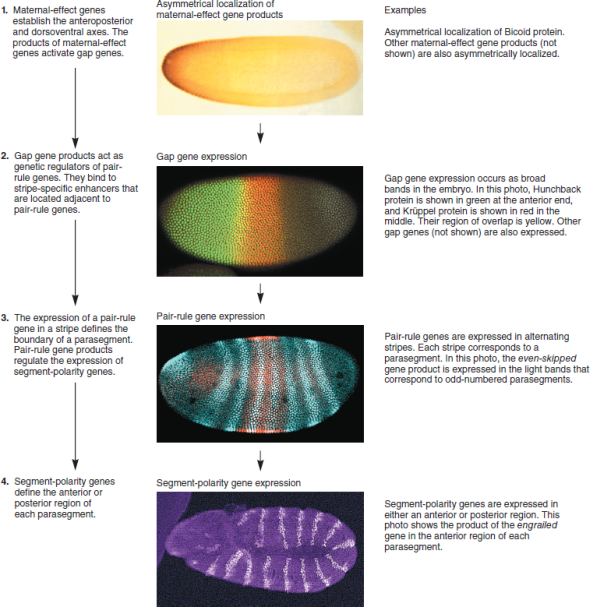
Genetics: Analysis and Principles 5th Edition by Robert Brooker
Edition 5ISBN: 978-0073525341
Genetics: Analysis and Principles 5th Edition by Robert Brooker
Edition 5ISBN: 978-0073525341 Exercise 24
You need to understand solved problem S4 before answering this question. If the artificial gene containing the stripe 2 enhancer and the -galactosidase gene was found within an embryo that also contained the following loss-of-function mutations, what results would you expect In other words, would there be a stripe or not Explain why
a. Krüppel
B. bicoid
C. hunchback
D. giant
Solved Problem S4
An intriguing question in developmental genetics is, how can a particular gene, such as even-skipped, be expressed in a multiple banding pattern as seen in Figure 25.11 Another way of asking this question is, how is the positional information within the broad bands of the gap genes able to be deciphered in a way that causes the pair-rule genes to be expressed in this alternating banding pattern The answer lies in a complex mechanism of genetic regulation. Certain pair-rule genes have several stripe-specific enhancers that are controlled by multiple transcription factors. A stripe-specific enhancer is typically a short segment of DNA, 300-500 bp in length, that contains binding sequences recognized by several different transcription factors. This term is a bit misleading because a stripe-specific enhancer is a regulatory region that contains both enhancer and silencer elements.In 1992, Michael Levine and his colleagues investigated stripe-specific enhancers located near the promoter of the even-skipped gene. A segment of DNA, termed the stripe 2 enhancer, controls the expression of the even-skipped gene; this enhancer is responsible for the expression of the even-skipped gene in stripe 2, which corresponds to parasegment 3 of the embryo. The stripe 2 enhancer is a segment of DNA that contains binding sites for four transcription factors that are the products of the Krüppel, bicoid, hunchback, and giant genes. The Hunchback and Bicoid transcription factors bind to this enhancer and activate the transcription of the even-skipped gene. In contrast, the transcription factors encoded by the Krüppel and giant genes bind to the stripe 2 enhancer and repress transcription. The figure shown next describes the concentrations of these four transcription factor proteins in the region of parasegment 3 (i.e., stripe 2) in the Drosophila embryo.
a.
To study stripe-specific enhancers, researchers have constructed artificial genes in which the enhancer is linked to a reporter gene, the expression of which is easy to detect. The next figure shows the results of an experiment in which an artificial gene was made by putting the stripe 2 enhancer next to the -galactosidase gene. This artificial gene was introduced into Drosophila, and then embryos containing this gene were analyzed for -galactosidase activity. If a region of the embryo is expressing -galactosidase, the region will stain darkly because -galactosidase converts a colorless compound into a dark blue compound.
a.
Explain these results.FIGURE 25.11 Overview of the genetic hierarchy leading to segmentation in Drosophila. Note: When comparing steps 3 and 4, the elongated embryo bends in the middle and folds back on itself.
a. Krüppel
B. bicoid
C. hunchback
D. giant
Solved Problem S4
An intriguing question in developmental genetics is, how can a particular gene, such as even-skipped, be expressed in a multiple banding pattern as seen in Figure 25.11 Another way of asking this question is, how is the positional information within the broad bands of the gap genes able to be deciphered in a way that causes the pair-rule genes to be expressed in this alternating banding pattern The answer lies in a complex mechanism of genetic regulation. Certain pair-rule genes have several stripe-specific enhancers that are controlled by multiple transcription factors. A stripe-specific enhancer is typically a short segment of DNA, 300-500 bp in length, that contains binding sequences recognized by several different transcription factors. This term is a bit misleading because a stripe-specific enhancer is a regulatory region that contains both enhancer and silencer elements.In 1992, Michael Levine and his colleagues investigated stripe-specific enhancers located near the promoter of the even-skipped gene. A segment of DNA, termed the stripe 2 enhancer, controls the expression of the even-skipped gene; this enhancer is responsible for the expression of the even-skipped gene in stripe 2, which corresponds to parasegment 3 of the embryo. The stripe 2 enhancer is a segment of DNA that contains binding sites for four transcription factors that are the products of the Krüppel, bicoid, hunchback, and giant genes. The Hunchback and Bicoid transcription factors bind to this enhancer and activate the transcription of the even-skipped gene. In contrast, the transcription factors encoded by the Krüppel and giant genes bind to the stripe 2 enhancer and repress transcription. The figure shown next describes the concentrations of these four transcription factor proteins in the region of parasegment 3 (i.e., stripe 2) in the Drosophila embryo.

a.
To study stripe-specific enhancers, researchers have constructed artificial genes in which the enhancer is linked to a reporter gene, the expression of which is easy to detect. The next figure shows the results of an experiment in which an artificial gene was made by putting the stripe 2 enhancer next to the -galactosidase gene. This artificial gene was introduced into Drosophila, and then embryos containing this gene were analyzed for -galactosidase activity. If a region of the embryo is expressing -galactosidase, the region will stain darkly because -galactosidase converts a colorless compound into a dark blue compound.

a.
Explain these results.FIGURE 25.11 Overview of the genetic hierarchy leading to segmentation in Drosophila. Note: When comparing steps 3 and 4, the elongated embryo bends in the middle and folds back on itself.

Explanation
In an artificial gene containing a strip...
Genetics: Analysis and Principles 5th Edition by Robert Brooker
Why don’t you like this exercise?
Other Minimum 8 character and maximum 255 character
Character 255



